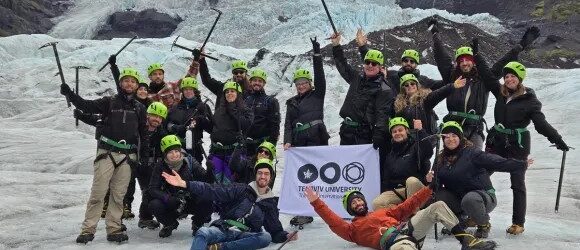TAU Geophysics students travel to Iceland with support from the university
A Classroom Beneath the Northern Lights
Led by Colin Price, Full Professor at the Department of Geophysics of the TAU’s School of Exact Sciences, and Dr. Judi Lax, a former Geophysics student, the group spent several days exploring Iceland’s striking landscapes and observing first-hand the geological, atmospheric and space phenomena that shape our planet.

TAU geophysics students with Prof Colin Price (right) at the Gullfoss Waterfall
Students prepared and presented research on-site, covering topics such as plate tectonics, geothermal energy, glacial retreat, volcanoes, space weather and carbon capture.
“We study these processes for years in the classroom, but seeing signs of plate tectonics, melting glaciers, and geothermal energy is a life-changing experience.”—Professor Price
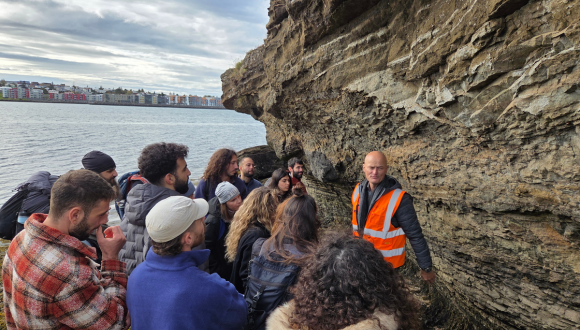
Learning in the field with Reykjavik University
The students also visited Reykjavik University, where they met a local professor and students specializing in climate and sediment research. The students joined a lab course that gave them a glimpse into cutting-edge climate studies and even a chance to observe sediment-core analysis in action.
Connecting Theory, People, and Purpose
For the participants, the trip deepened their understanding of their field and their sense of purpose.
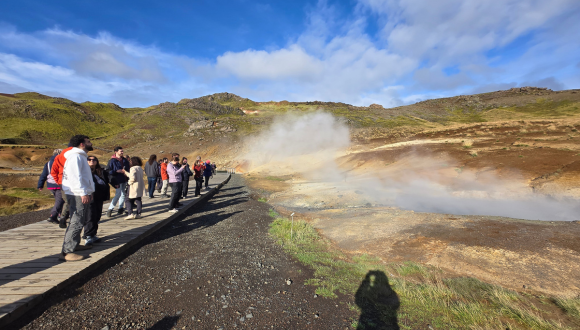
Krýsuvík, a geothermal area with steaming vents and colorful sulfur deposits
“To see energy produced from the Earth with my own eyes was mind-blowing,” said Yuval Goldstein, a fourth-year undergraduate in the dual degree BSc in Mechanical Engineering and Geosciences. “It’s hard to imagine how it’s actually done until you watch steam rise from the ground.”
“Standing where a glacier once was, seeing how far it has receded, made me rethink what I want to do with my skills, how I can contribute,”—Naomi Friedman, a third year BSc student
“Also, to finally see things we’d only studied in class, like cloud formations and erosion processes, made everything click,” added Naomi.
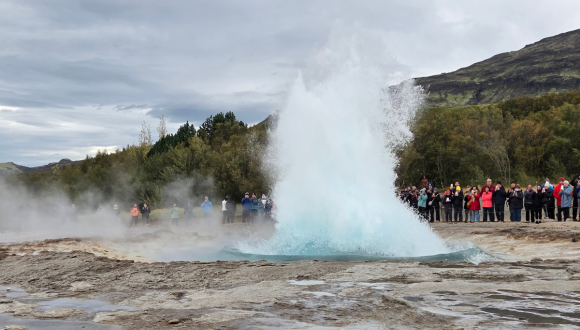
Observing Strokkur, a geyser erupting every few minutes
Yana Novomodsky, who has just started her MSc in Geophysics and is also involved in promoting geophysics studies, added: “All the pictures we took during the trip will help us show what geophysics actually is, because people often don’t know what the field involves.”
“Iceland is the ‘Mecca’ for geophysicists. We didn’t just see the phenomena, we felt them: the wind, the rain, the smell of sulfur, the sudden weather changes.”—Tal Zahavi, a graduate student
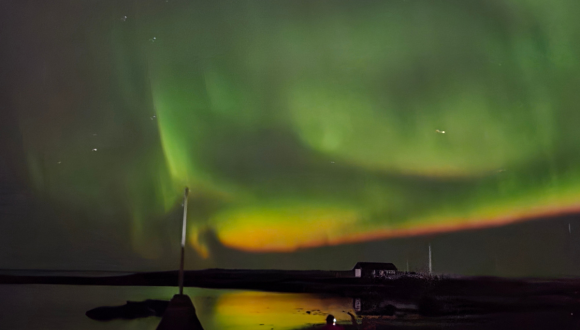
Tal Zahavi: “As for the Northern Lights, we used our own geophysical calculations to find the best place to see them on the last night. It was magical.”
For PhD student Jonathan Levy, the experience went beyond academic discovery: “Iceland has always been a dream. To see everything we’ve been studying, in person, with people who understand the field, took it to another level. It even gave me research ideas for possible collaborations there.”
A Community in Motion
Beyond the scientific encounters, the trip strengthened a sense of academic community.
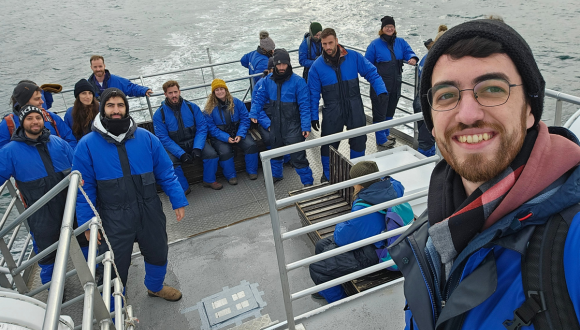
Tal Zahavi (right) with his fellow students during the trip to Iceland
“Geophysics is a small department, maybe 20 or 30 students, so you always see the same faces in the hallway,” said Lidor Ivgi a new MSc student.
“Now I really know everyone, from undergrads to PhD students. That connection motivates me to continue to advanced studies. And traveling with our professor, Colin, across Iceland, even watching the Northern Lights together, that’s unforgettable.”— Lidor Ivgi, a graduate student
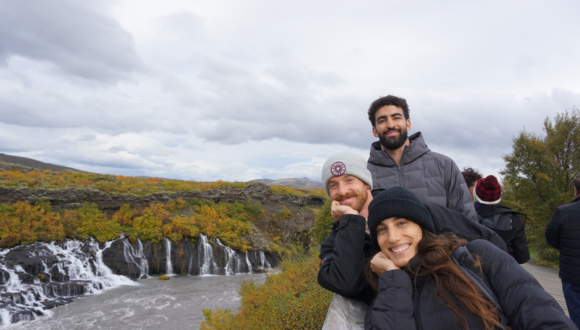
Samir Asad, Yahav Nayar, and Gal Menzor at Barnafoss Waterfall
“All the concepts we’ve studied suddenly became real,” added Gal Menzor, a 4-year BSc student in Mechanical Engineering and Geosciences. “Doing it alongside amazing classmates and professors made it even more impactful.”
“I hadn’t expected to join,” said Hadar Erez Reshef, who begins her MSc studies this year. “It was incredible. I really gained a sense of belonging to my department and the degree. It made me understand why I chose this path.”
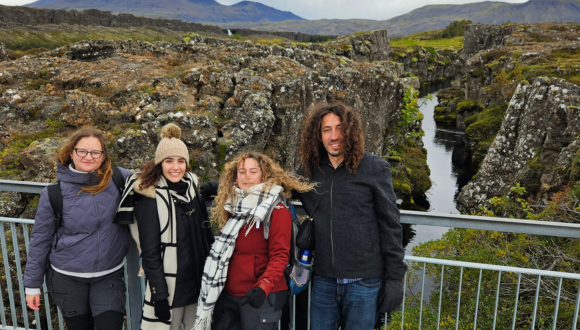
From left to right: Yana Novomodsky, Hadar Erez Reshef, Noam Rachmilevitch, and Ophir Ariel at the Þingvellir National Park, a UNESCO site where the Eurasian and North American tectonic plates meet.
Irina Rogovsky, who has just completed her PhD in Geography, reflected on the difference of traveling with fellow scientists:
“On a group tour, people usually ask where we’re sleeping or what’s for dinner. Here, everyone cared about the rocks and formations, which made it completely different.”—Irina Rogovsky, PhD in Geography
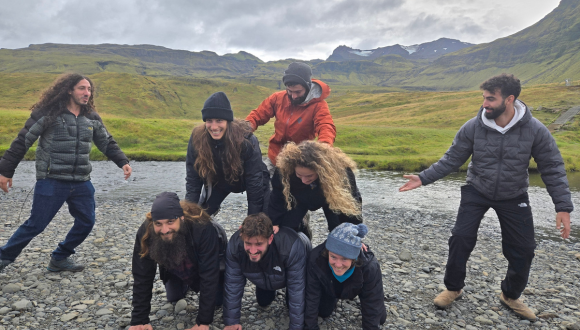
Team spirit in action
Global Learning in Action
At a post-trip gathering, Professor Milette Shamir, TAU Vice President for International Affairs, praised the initiative: “This trip embodies the mission of the Lowy International School: connecting academic excellence with global engagement.”
“Field-based learning allows our students to see how their studies relate to real-world phenomena.”—Professor Milette Shamir, TAU Vice President for International Affairs
Maureen Adiri Meyer, Director of the Lowy International School, added that moments like these make the team’s efforts worthwhile: “Usually, we see only emails, reports, and budget lines, but here we see the real impact on people’s lives. That’s what gives our work meaning. Thank you for taking part in something so significant.”
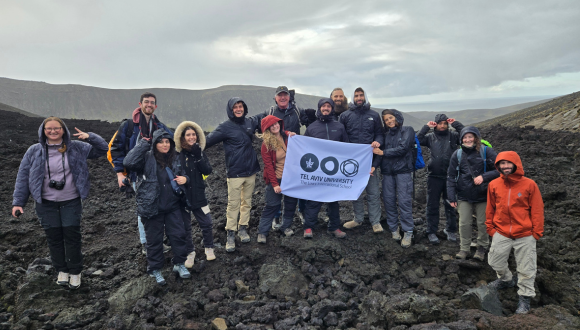
TAU geophysics students at the Fagradalsfjall volcano
Sharon Ziv Kafri, Director of International Development at Tel Aviv University, emphasized the program’s vision: “Hearing what you’ve shared today is exactly what we had in mind when we created this opportunity.
“Academic study tours give Israeli students the chance to experience the world in an educational context. When we hear students say this trip motivated them to continue to graduate studies or made them feel a stronger sense of belonging, that’s exactly our goal.”—Sharon Ziv Kafri, Director of International Development
For Professor Price, the trip’s value was clear: “I am sure this trip will have long-term implications for the students’ careers, research and even their outlook on life.
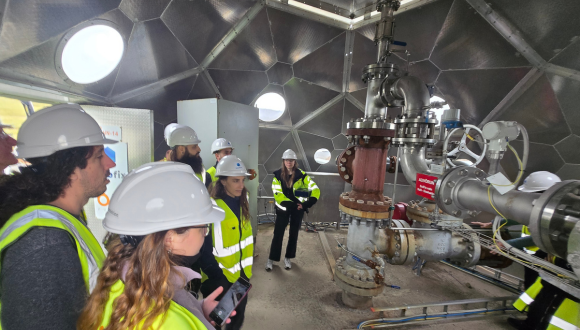
At a pioneering direct air capture plant removing CO₂ from the atmosphere.
“I think for some of the students this was a life-changing experience.”—Professor Price
As Professor Shamir concluded, “This kind of global, hands-on education is the future, and it’s wonderful to see our students leading the way.”
